Locals in Hanoi’s Thuy Khue ward affectionately refer to Chau Lam Pagoda as “Ba Danh” Pagoda, named after the solitary woman who has long tended its sacred grounds. She was known for opening and closing the temple, lighting incense, cleaning, weeding, and burning leaves - duties she quietly performed for decades.
Chau Lam Pagoda was originally built alongside the Chau Lam institute during the reign of King Le Thanh Tong (1460-1497), in Thuy Chuong village, which is now part of modern-day Hanoi.
Historical records indicate that in 1471, during the Later Le dynasty, King Le Thanh Tong led a military campaign against Champa. After a decisive victory, the Le army captured 30,000 Cham prisoners and brought them back to Dai Viet.
Among the captives were many strong, skilled builders and carpenters. The king resettled them in the capital to help with construction projects.
These Cham prisoners were housed near Dam Dam Lake, where today’s Chu Van An High School stands. This area became known as Chau Lam ward or institute. Since many of the prisoners practiced Buddhism, a small temple was built to accommodate their religious needs. This thoughtful gesture reflected a respect for their spiritual lives.
Named after the ward, the temple became Chau Lam Pagoda and was entrusted to the care of a widowed woman. She earned the nickname “Ba Danh” and became an iconic figure associated with the temple. The Cham prisoners and nearby villagers affectionately began calling the place "Ba Danh Pagoda."
Previously, Thuy Chuong village had two temples: Chau Lam Pagoda and Phuc Lam Pagoda. In 1870, the two were merged under the new name Phuc Chau Pagoda. By 1907, when the French colonial administration requisitioned land to build the Lycée du Protectorat (now Chu Van An High School), the temple was relocated to its current site at alley 199, Thuy Khue Street. The horizontal lacquered board inscribed “Phuc Chau Tu” remains preserved in the pagoda.
Tucked away within alley 199, Chau Lam Pagoda remains a serene retreat, known colloquially as "Ba Danh Pagoda" in tribute to the woman who tended it from its earliest days.
The main structure features a traditional Vietnamese “Đinh” (丁)-shaped layout with three contiguous sections: the front hall, incense chamber, and main sanctuary. Surrounded by enclosing walls, this layout creates a spacious, solemn setting for worship.
Despite being located on bustling Thuy Khue Street, the temple is often quiet. It opens on the 1st and 15th days of the lunar month for worshippers and visitors.
Inside are 48 statues of various sizes, including three statues of Mother Goddesses, five of revered ancestors, and 40 lacquered and gilded Buddha statues dating from the 18th to 20th centuries.
The pagoda also preserves a stone stele and the bell inscribed “Chau Lam Thien Tu.” Cast in 1692 during the 13th year of the Chinh Hoa reign (Year of the Dragon), the bell measures 0.60 meters in height and 0.28 meters in width.
Today, Chau Lam Pagoda stands as a remarkable example of ancient village temple architecture. It retains wooden structural elements characteristic of the Nguyen dynasty’s aesthetic.
With its wide, stately layout, picturesque surroundings, and verdant greenery, the temple maintains a dignified stillness. Within the temple grounds is also a memorial area dedicated to the martyrs of Thuy Khue ward.
Spanning over 4,000 square meters, Chau Lam Pagoda offers a rare, tranquil space amid the high-rises and hustle of modern Hanoi.
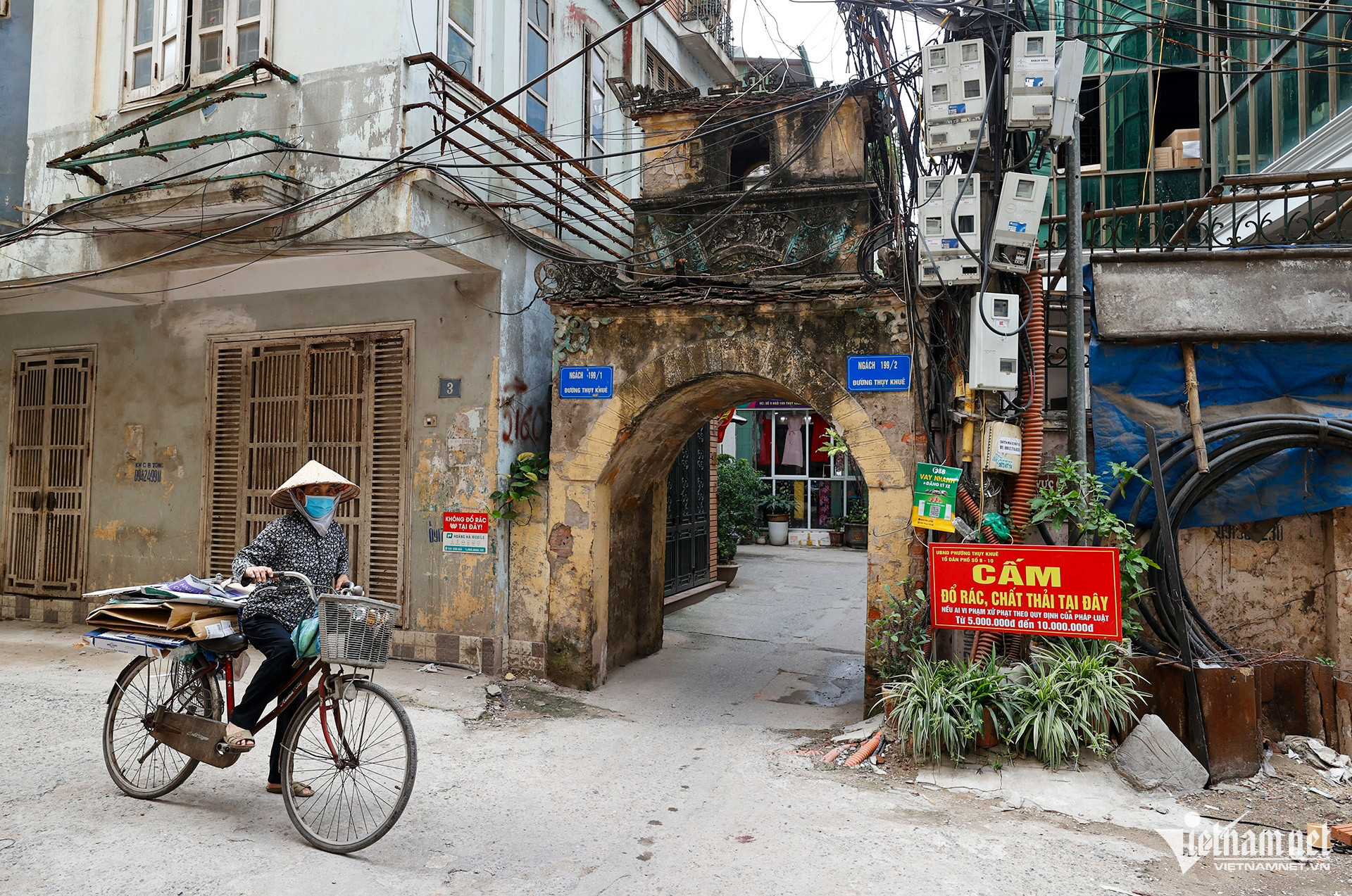
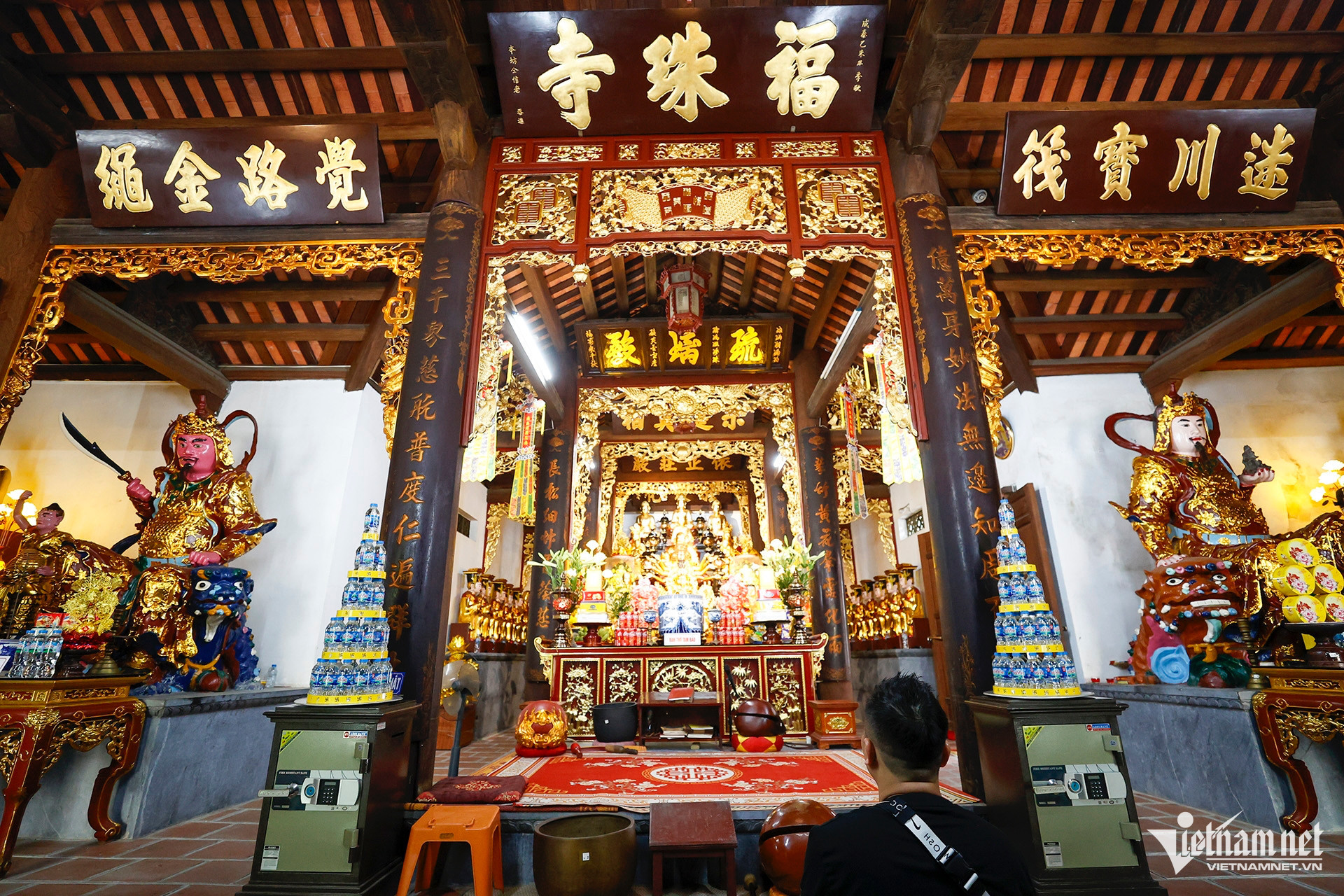
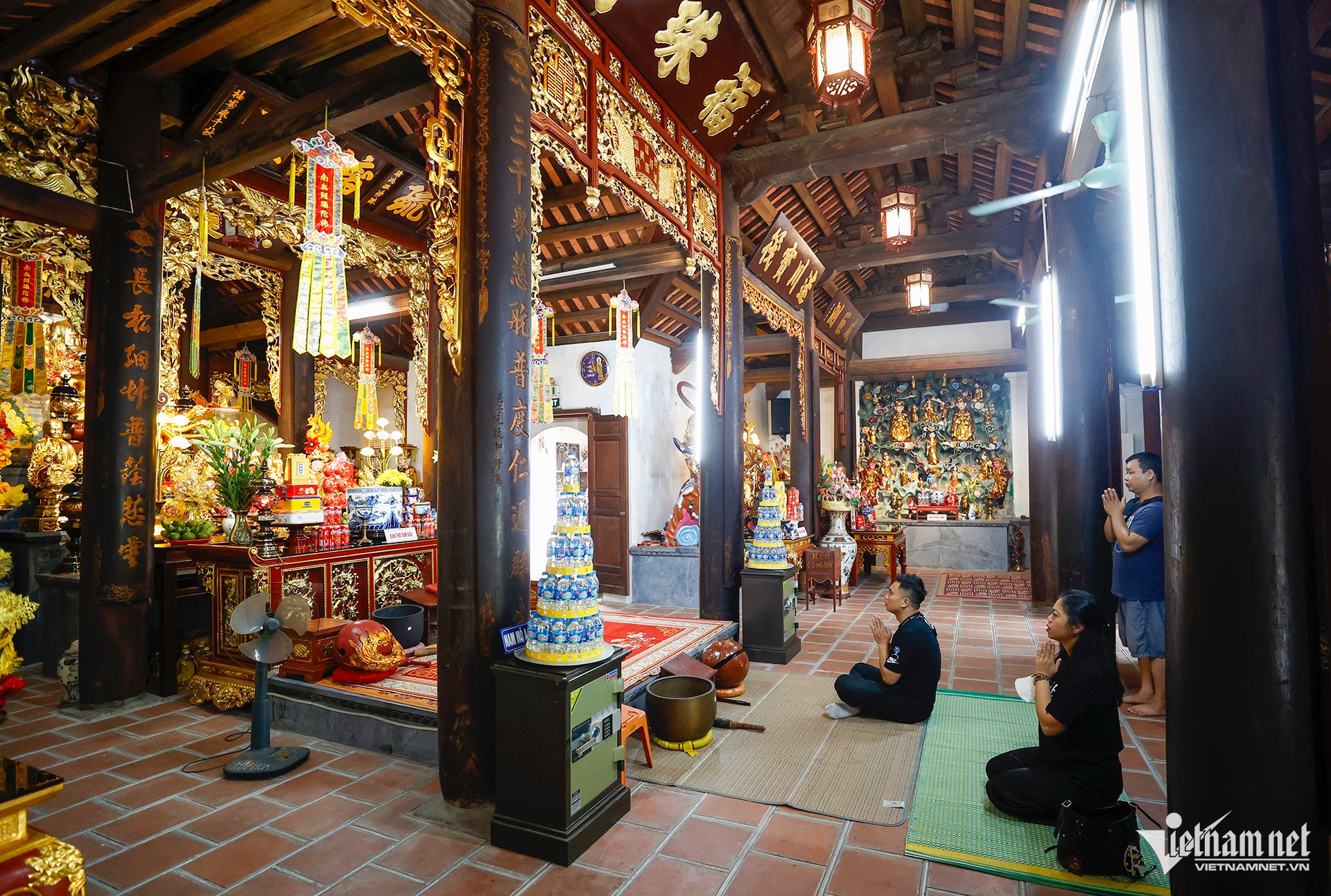
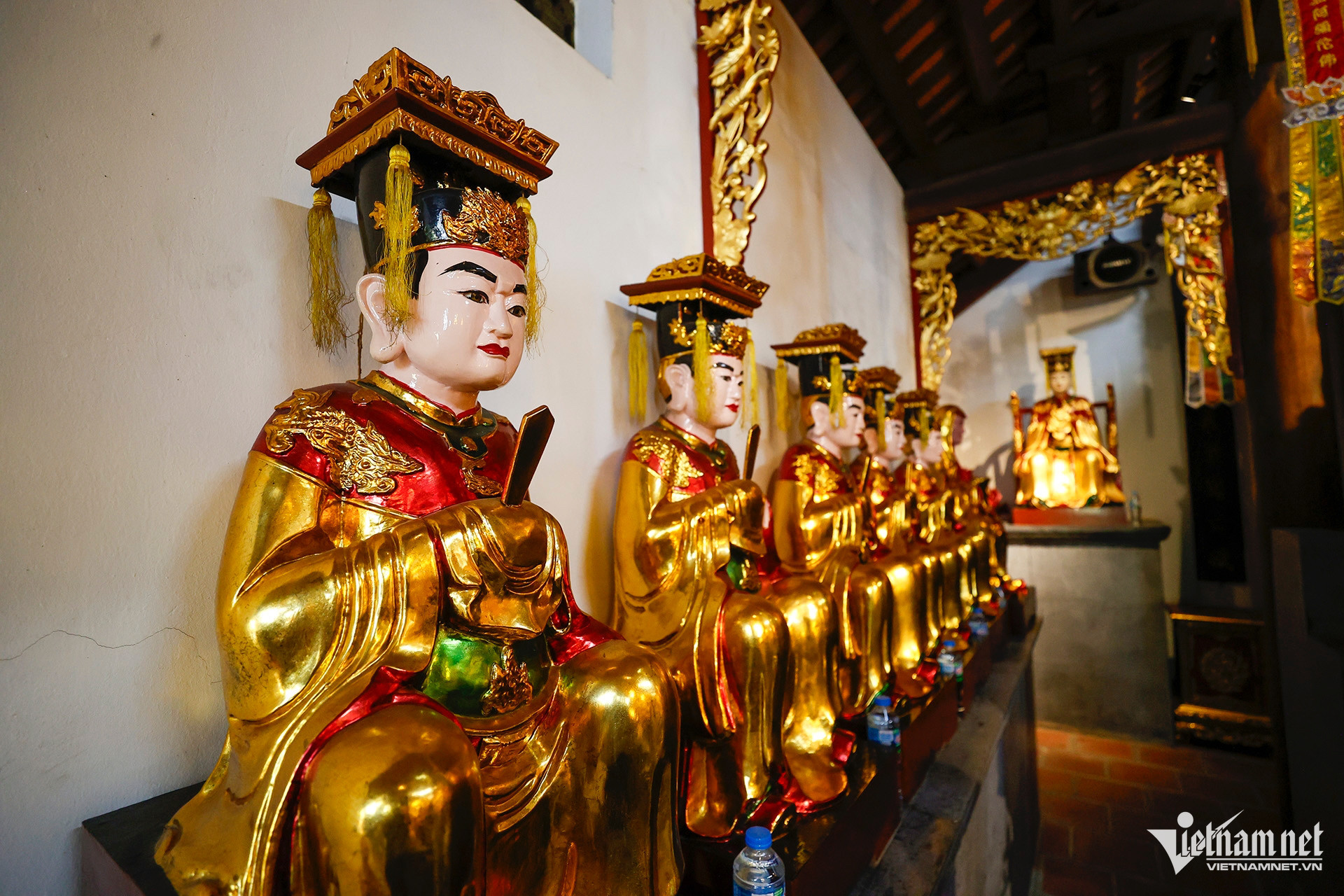
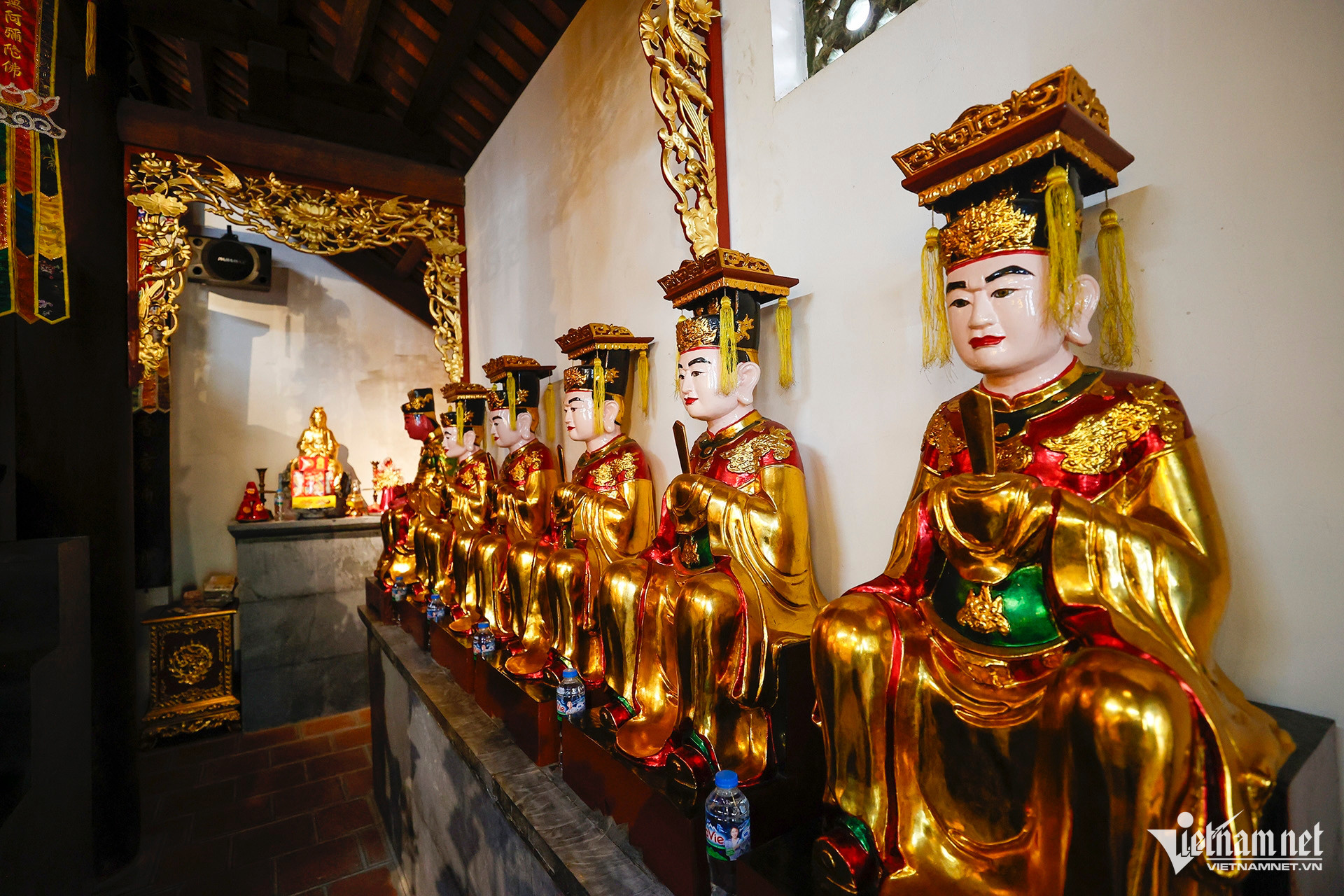
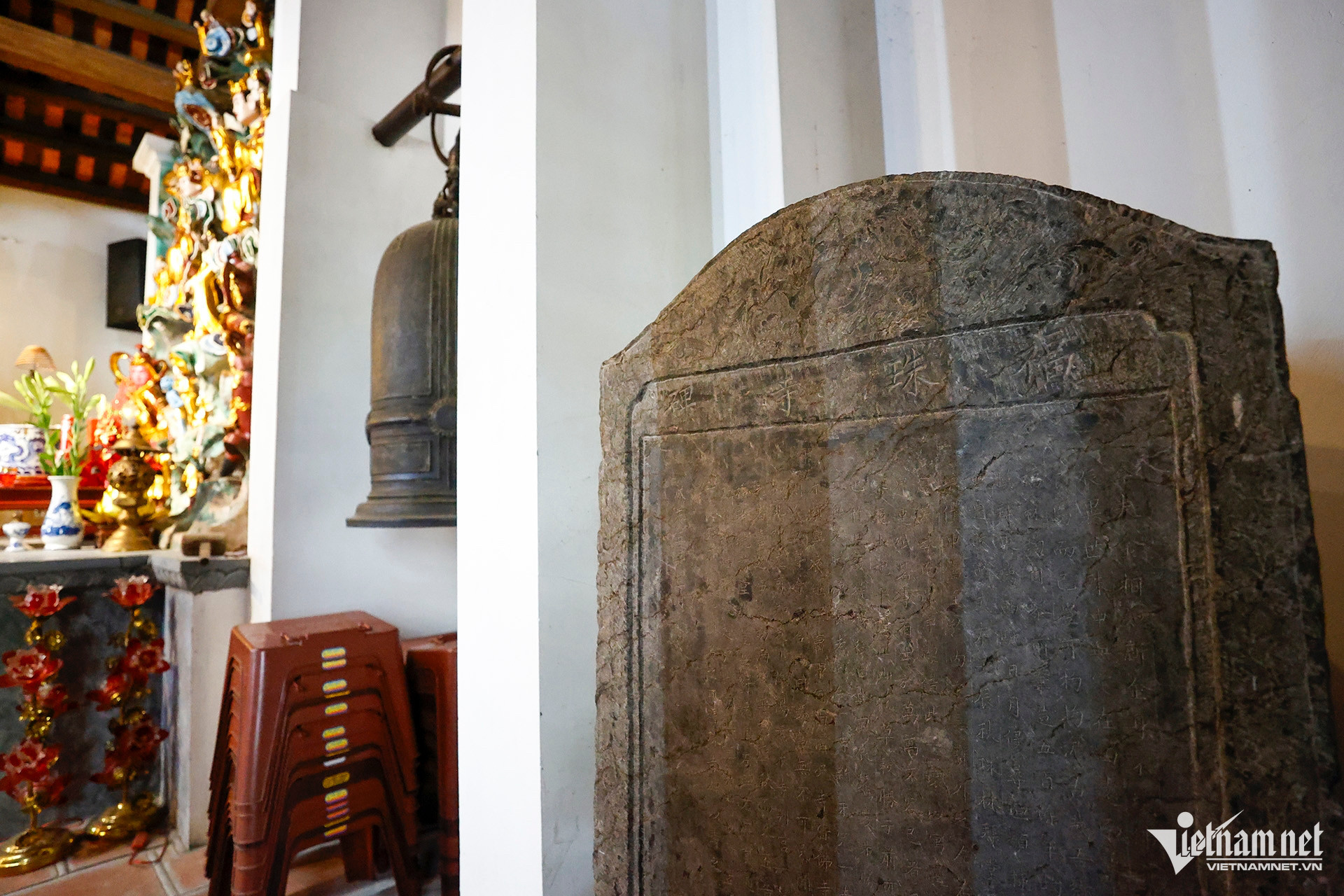
The “Chau Lam Thien Tu” bell cast in 1692.
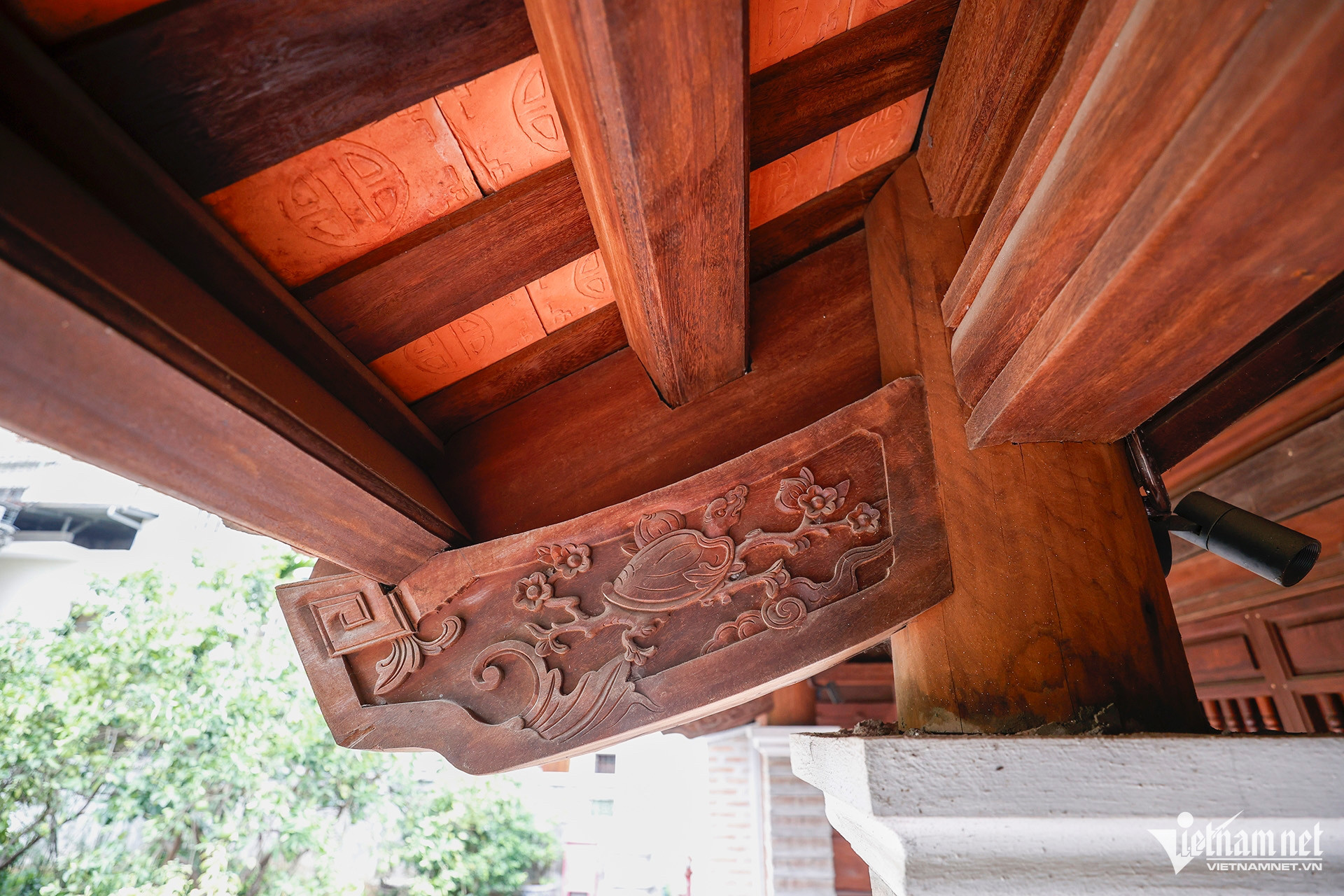
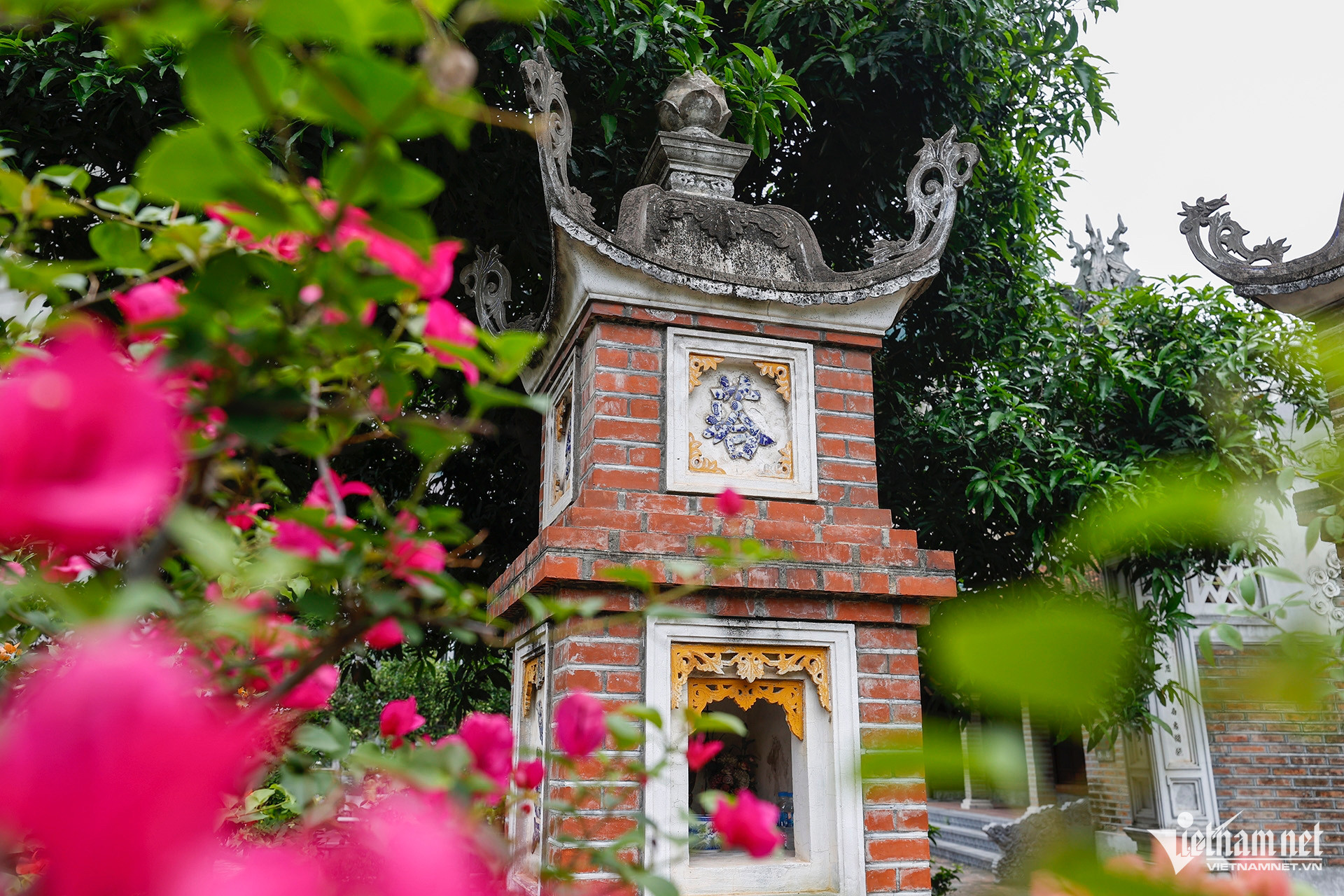
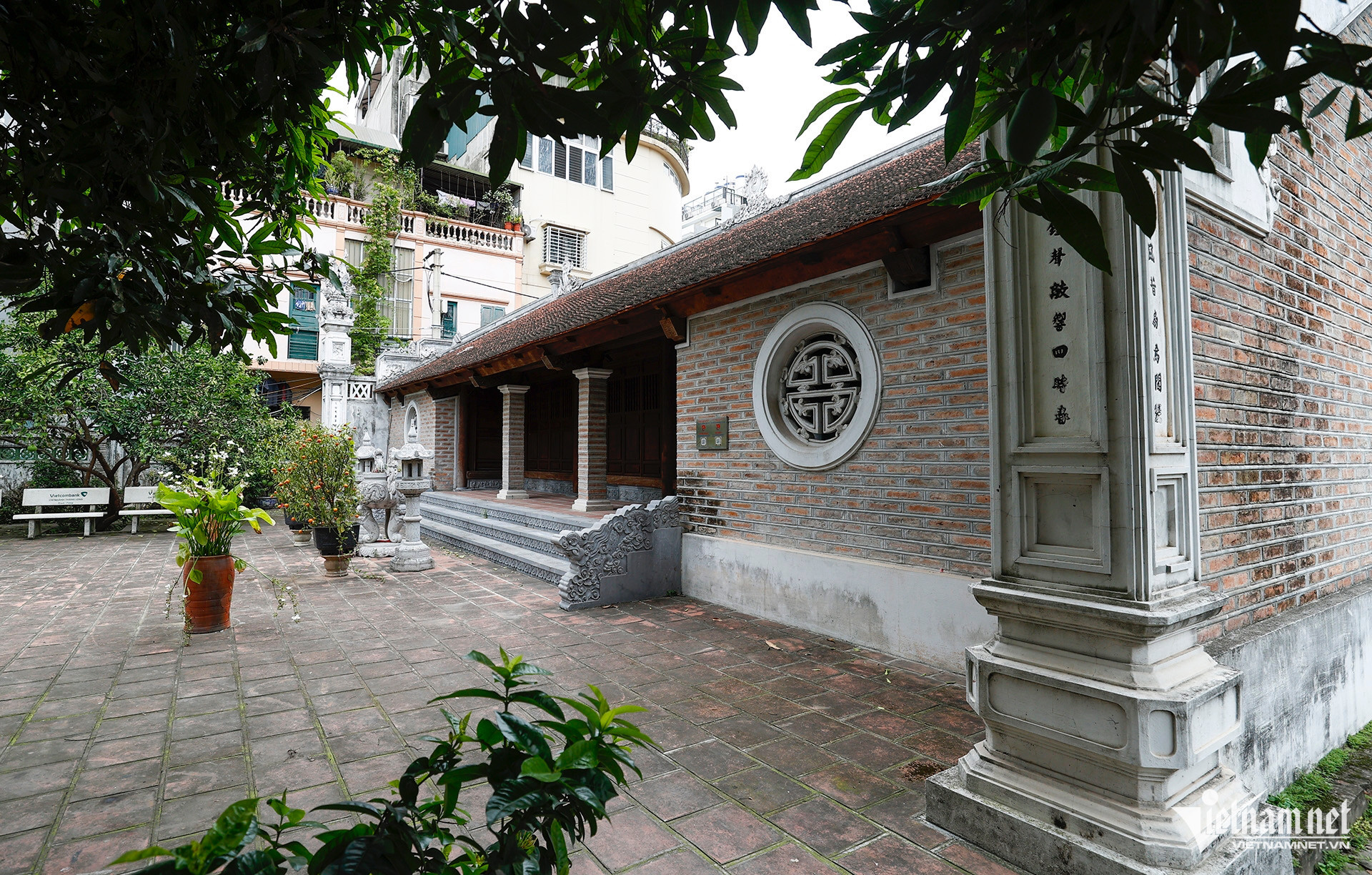
The temple’s quiet inner yard and gardens.
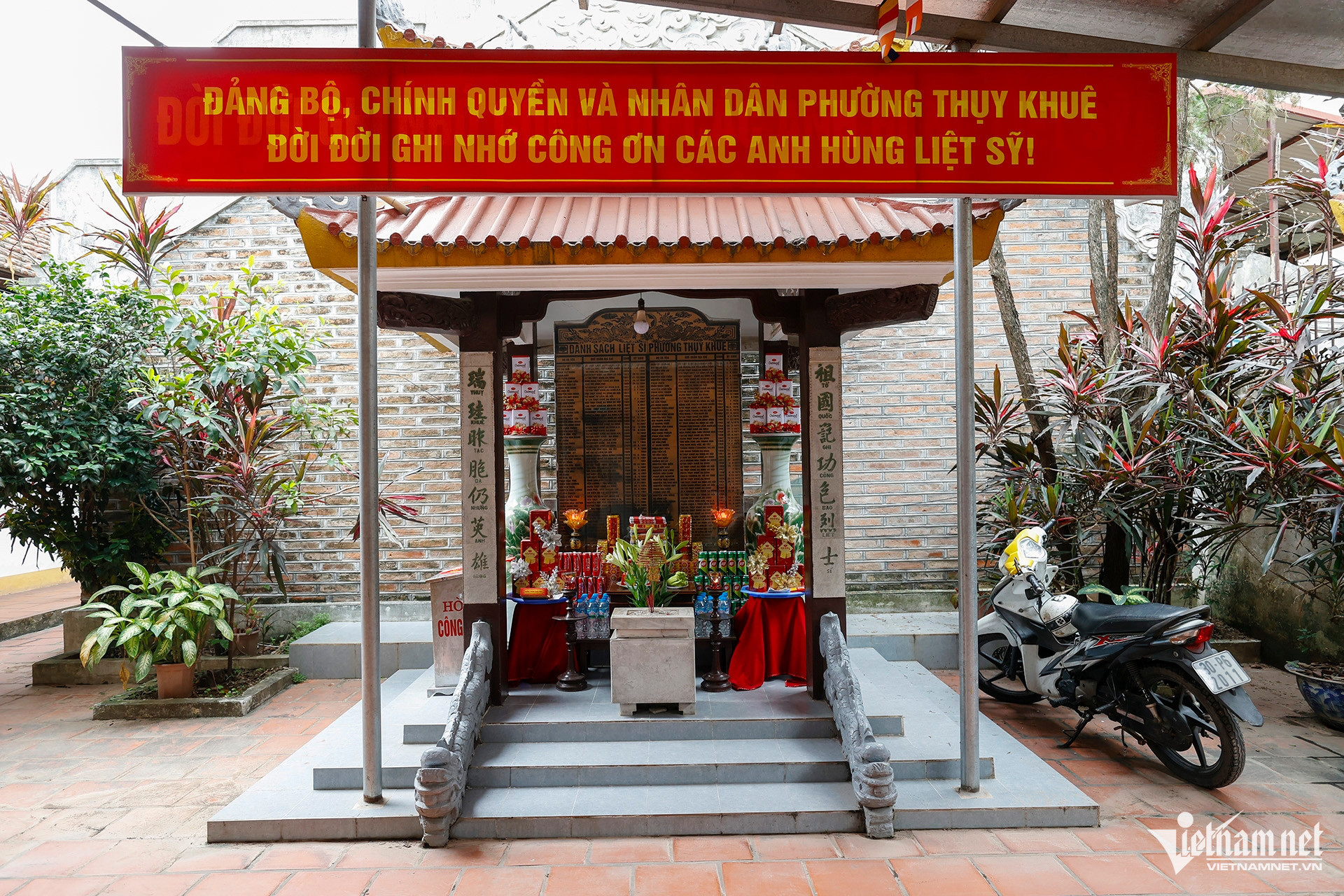
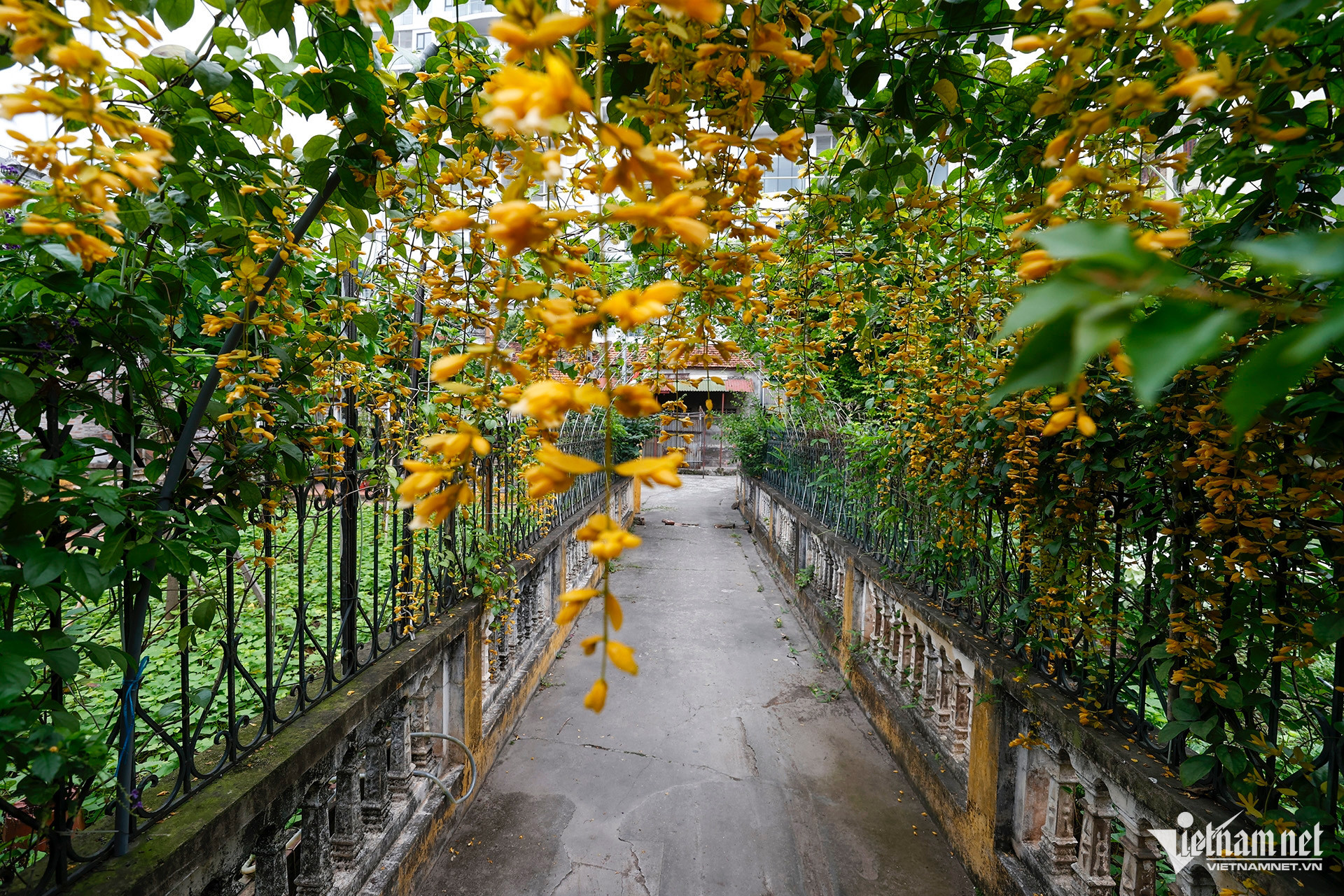
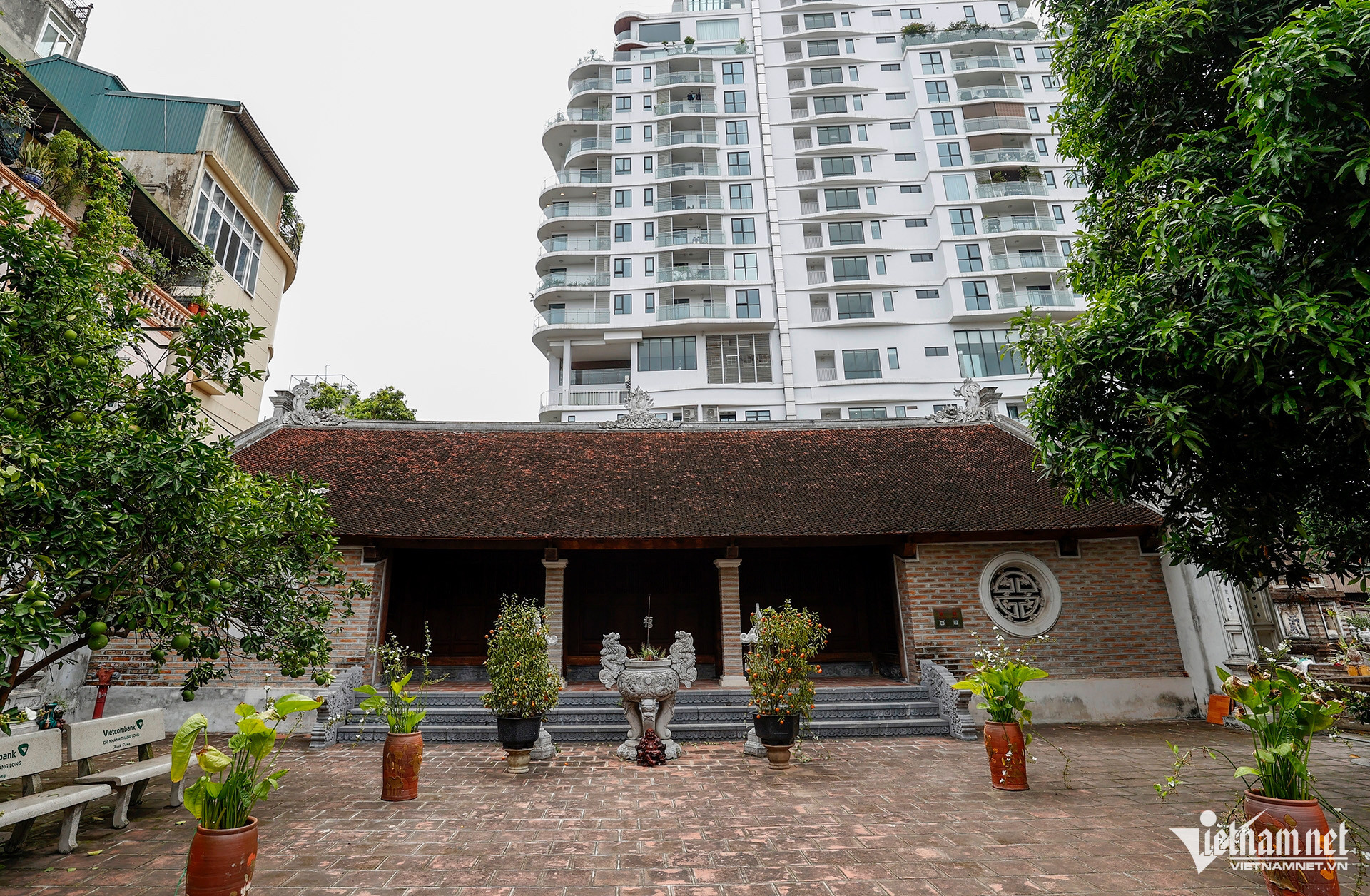
Pham Hai